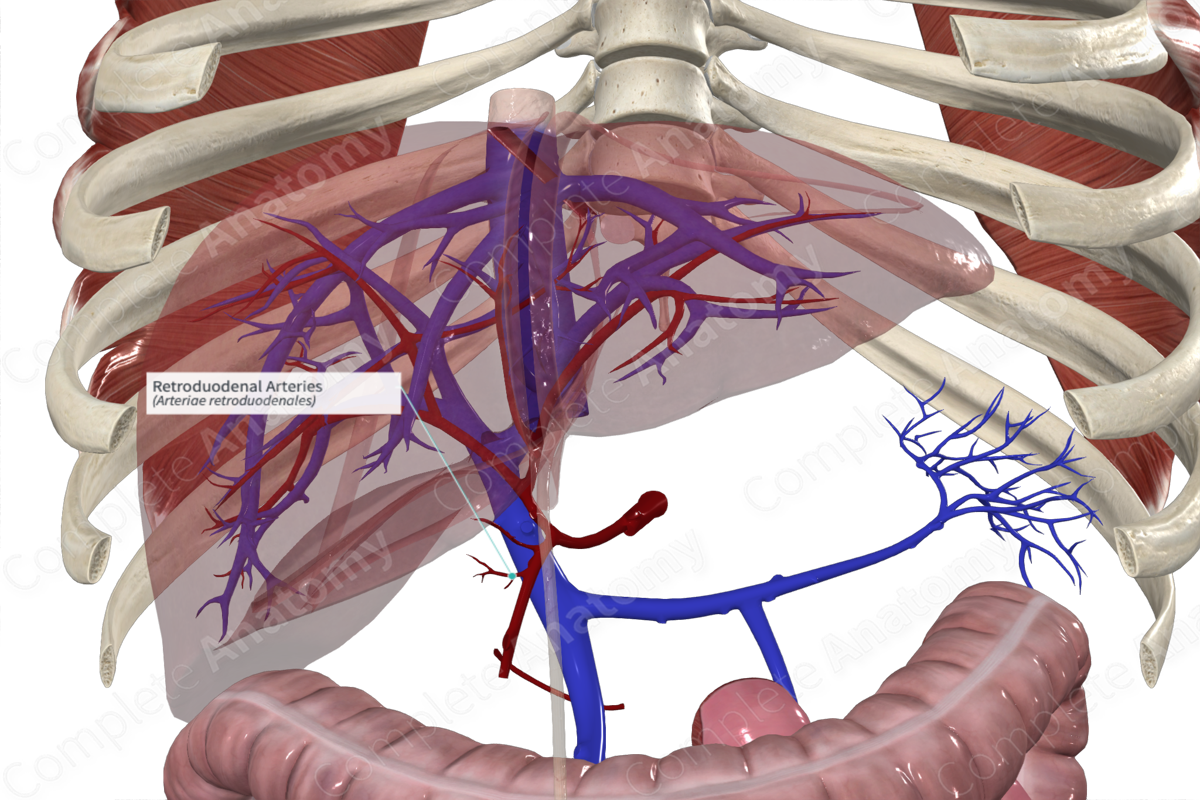
Quick Facts
Origin: Gastroduodenal Artery.
Course: Follows the proximal duodenum on its posterior surface.
Branches: Anastomoses with other branches of the gastroduodenal artery and the inferior pancreaticoduodenal artery.
Supplied Structures: Posterior surface of the proximal duodenum.
Origin
The retroduodenal arteries arise from the gastroduodenal artery posterior to the first part of the duodenum. There may be one or several retroduodenal arteries.
Course
The retroduodenal arteries pass to the right, following the duodenum along its posterior surface. They are of variable length, typically ending near the entry point of the common bile and pancreatic ducts (ampulla of Vater), but may extend to the initial portion of third part of the duodenum (Edwards, 1941).
Branches
The retroduodenal arteries anastomose with branches of the inferior pancreaticoduodenal artery.
Supplied Structures
The retroduodenal arteries supply the posterior aspect of first part and some of second part of the duodenum. It may also supply the distal-most segments of the common bile and pancreatic ducts.
References
Edwards, L. F. (1941) 'The retroduodenal artery', The Anatomical Record, 81(3), pp. 351-355.
Learn more about this topic from other Elsevier products
Artery

Arteries are vessels transporting blood between heart, tissues, and other organs in order to supply them with nutrition and oxygen.



